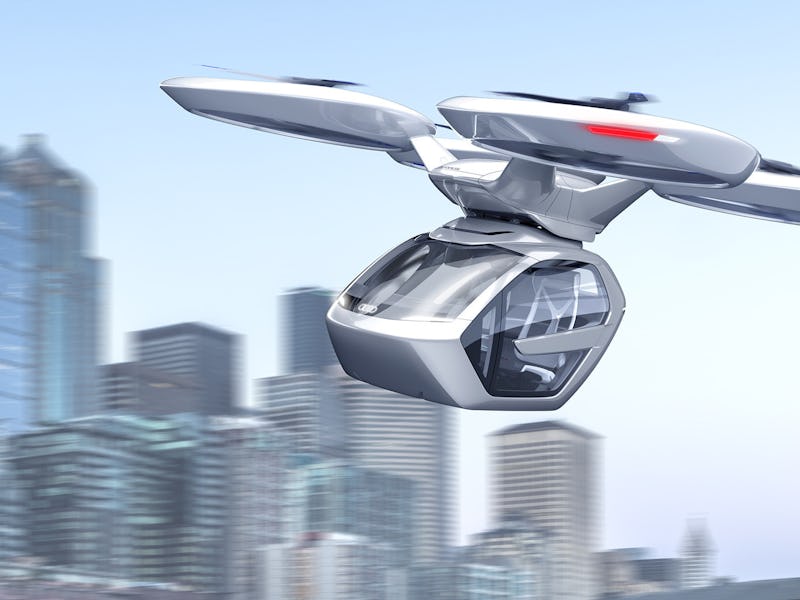
Airbus and Italdesign have revealed a new version of their Pop.Up Next modular flying car system, and they’ve now got Audi on board. The latest version of the car, unveiled Tuesday, shows several improvements in the 12 months since its initial debut. At its core, the vision remains the same: an autonomous pod powered by artificial intelligence that combines flying, driving, and possibly even hyperloop, to get passengers around a city.
“Hyperloop is a possible solution that hypothetically could work since Pop.Up is a modular system,” a spokesperson from Italdesign tells Inverse. “Although we focused our efforts to bring the system to the next level, compared to last year, developing the latching system and the HMI.”
The pod, measuring 8.7 feet by five feet and standing 4.6 feet high, is at the heart of this plan. It’s a two-seater design weighing 441 pounds, with a human-machine interface system that can track eye movements, recognize faces and offer on-board services through a 49-inch touchscreen.
The on-board touchscreen.
A coupling system is used to transfer between forms of transport, with the group sketching out designs for a ground-based pod and an air-based pod. No more moving between car, bus, or helicopter to reach your destination.
The Audi attachment to Pop.Up Next.
“Pop.Up Next is an ambitious vision that could permanently change our urban life in the future,” says Dr. Bernd Martens, Audi board member for procurement and president of Italdesign.
Pop.Up interior.
The air module that clips to the top, measuring 16.4 feet by 14.4 feet by 2.8 feet, has eight motors powered by a 70 kilowatt-hour battery. Without payload, it has a range of 31 miles and can charge in just 15 minutes, with a top speed for the stand-alone module of 75 mph. The ground module that clips to the base, measuring 10.2 feet by 6.2 feet by 2.2 feet, is a rear-wheel drive electric vehicle. It’s powered by a 15 kilowatt-hour battery capable of 81 miles per charge, with comparable recharge times to the air module, and a top speed of 62 miles per hour.
Pop.Up in flight mode.
Of course, a potential hyperloop attachment could blow these stats away. Elon Musk’s vacuum-sealed pod transit system, unveiled in a 2013 white paper, can transport people at theoretical speeds of up to 700 miles per hour. The fastest speed publicly achieved is from Virgin Hyperloop One, which reached speeds of 240 miles per hour in December 2017.
Rear of the ground attachment.
If it comes to fruition, Pop.Up Next could herald a future where people whizz around cities through totally autonomous pods.